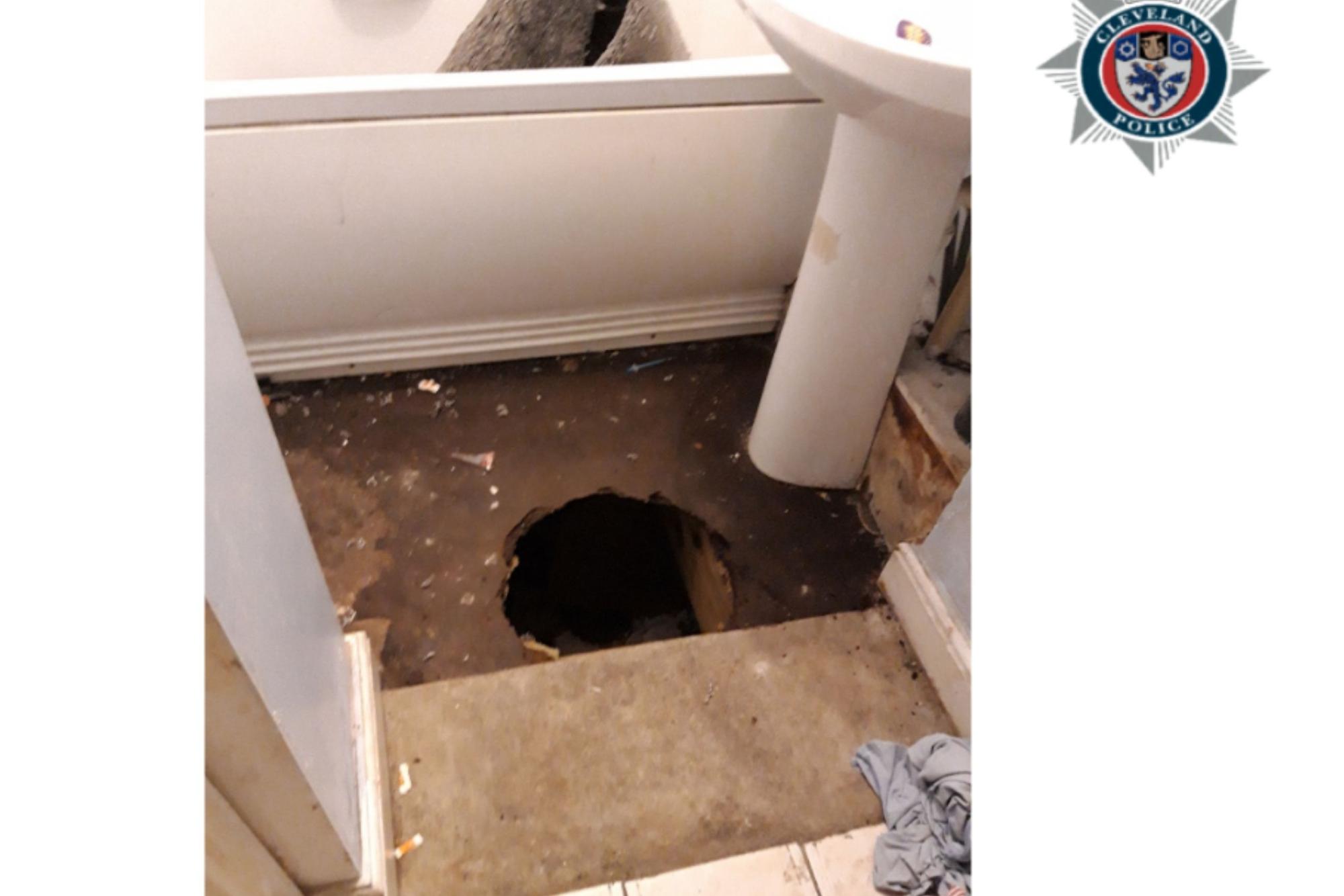Identifying the Extent of the Damage: Hole In Bathroom Floor

Before you start patching up that hole in your bathroom floor, you gotta know what you’re dealing with. It’s like diagnosing a patient before prescribing medicine, right? So, let’s get down to business and figure out how bad this damage really is.
Assessing the Hole
The first step is to take a good look at the hole itself. Grab a flashlight and get a clear view of the damage. You’ll want to check for:
- Size and Shape: Is it a small crack, a gaping hole, or something in between? This will give you a general idea of the severity of the damage.
- Depth: How deep is the hole? You might need to use a ruler or measuring tape to get an accurate measurement.
- Edges: Are the edges of the hole smooth or jagged? This can indicate how much force was used to create the hole.
Signs of Water Damage
Now, it’s time to investigate for signs of water damage. Water damage can weaken the floor and lead to further problems down the line. Look for:
- Staining: Dark or discolored areas around the hole can indicate water damage.
- Softness: If the floor feels spongy or soft around the hole, this is a clear sign of water damage.
- Mold or Mildew: The presence of mold or mildew is a surefire sign of water damage.
Checking for Rot
If you suspect water damage, you’ll need to check for rot. Rot can weaken the floorboards and make them unstable. Here’s how to check:
- Probing: Use a screwdriver or other tool to gently probe the floor around the hole. If the wood feels soft or crumbly, it’s likely rotted.
- Visual Inspection: Look for signs of rot, such as discoloration, holes, or crumbling wood.
Assessing Structural Instability
Now, it’s time to see if the damage affects the structural integrity of the floor. Here’s how:
- Stud Finder: Use a stud finder to locate the floor joists. If the hole is near a joist, it’s less likely to affect the structural integrity. If the hole is between joists, it could be more serious.
- Floor Movement: Gently push down on the floor around the hole. If the floor feels wobbly or moves, this could indicate structural instability.
Using a Moisture Meter
A moisture meter can be a handy tool for detecting water damage. It measures the moisture content of wood, which can help you determine if there’s a problem.
- Moisture Meter Readings: A moisture meter reading of 12% or higher is generally considered a sign of excessive moisture.
Repairing the Hole
The next step after assessing the damage is to repair the hole in your bathroom floor. This involves removing the damaged materials, reinforcing the subfloor, and installing new flooring. There are several techniques you can use to repair the hole, each with its own advantages and disadvantages.
Repairing the Hole, Hole in bathroom floor
The most common techniques for repairing a hole in a bathroom floor are patching, replacing, or using epoxy to fill the hole.
- Patching involves cutting out the damaged area and replacing it with a new piece of flooring. This is a good option for small holes, but it can be difficult to match the new flooring to the existing flooring.
- Replacing the entire floor is a more drastic option, but it may be necessary if the damage is extensive. This will give you a completely new floor and ensure that the subfloor is properly supported.
- Epoxy is a strong adhesive that can be used to fill in holes and cracks. This is a good option for small holes, but it may not be strong enough to support heavy loads. It also may not match the color or texture of the existing flooring.
Step-by-Step Guide for Repairing a Hole in a Bathroom Floor
Here is a step-by-step guide for repairing a hole in a bathroom floor:
- Remove the damaged materials. This may involve removing the flooring, subfloor, or even the joists, depending on the extent of the damage. Be careful not to damage any surrounding materials.
- Reinforce the subfloor. This may involve adding new joists, patching holes, or using plywood to create a solid base. The subfloor should be strong enough to support the weight of the new flooring.
- Install new flooring. You can use the same type of flooring as the existing flooring, or you can choose a different type. Make sure the new flooring is properly installed and sealed to prevent moisture damage.
